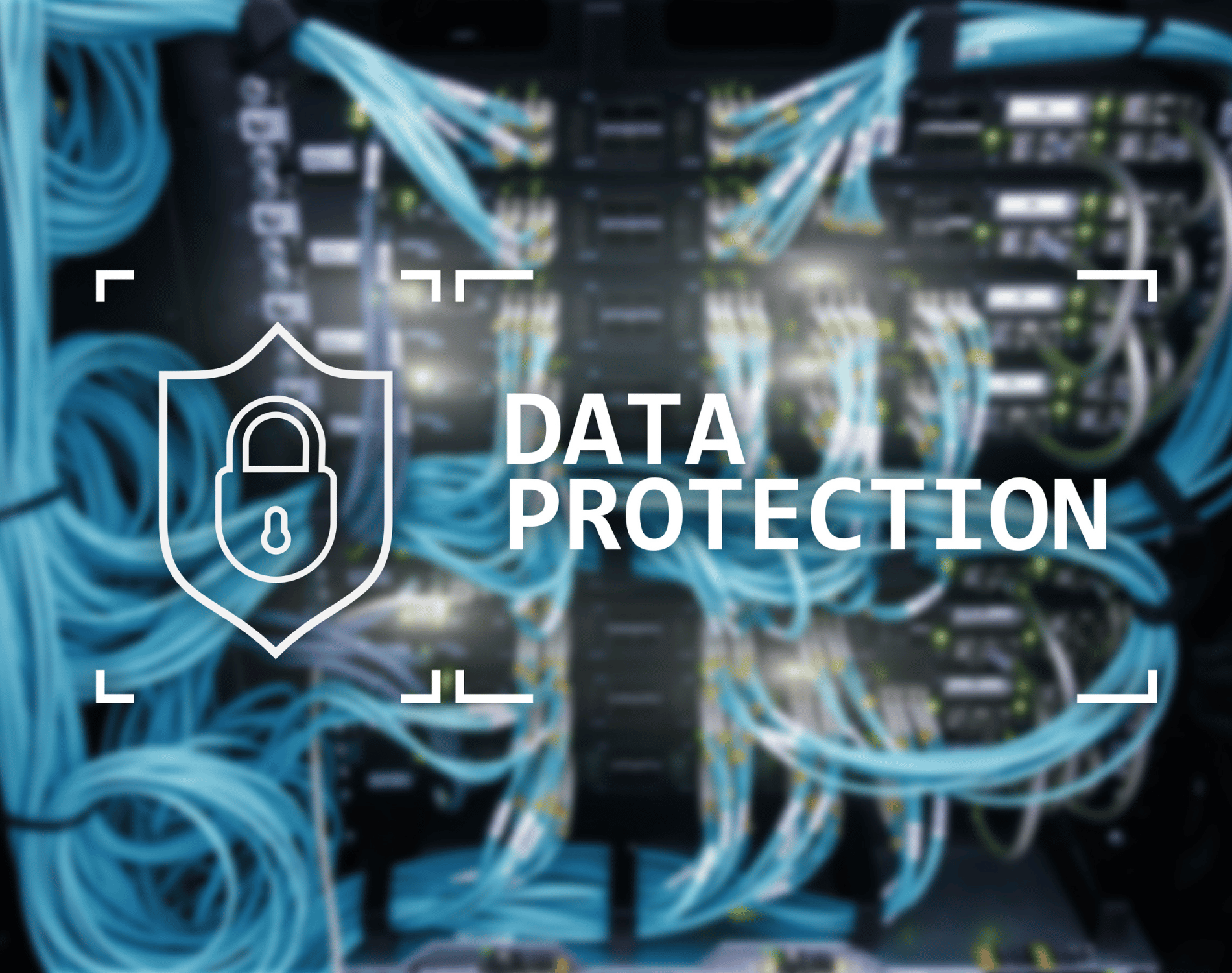How to Detect Keyloggers and Remove Them
Welcome to our comprehensive guide on how to detect keyloggers and remove them from your system. In today’s digital age, protecting our privacy and security is paramount, and being able to identify keyloggers is an essential skill. In this article, we will explore various keylogger detection techniques and provide you with step-by-step instructions on how to identify these stealthy threats.
Keyloggers are malicious software programs designed to record every keystroke you make on your computer. They can silently track your passwords, personal information, and sensitive data, posing a severe risk to your privacy and security. Therefore, learning how to detect keyloggers is crucial in keeping your information safe.
Whether you are a business professional, a student, or a casual computer user, understanding the signs and symptoms of keyloggers is essential in maintaining a secure digital environment. By being proactive and utilizing effective keylogger detection techniques, you can identify and neutralize these threats before they compromise your sensitive data.
In the following sections, we will cover manual methods for detecting keyloggers, explore keylogger detection software options available in the market, discuss the importance of secure keylogger removal, and provide best practices to protect against these invasive threats. By following our comprehensive guide, you will empower yourself with the knowledge and tools needed to safeguard your privacy.
So, let’s dive in and learn how to detect keyloggers effectively. Together, we can fortify our digital defenses and ensure a safe and secure online experience.
Understanding Keyloggers and Their Threats

In this section, we will delve into the world of keyloggers and explore the potential threats they pose to your privacy and security. It’s essential to understand what keyloggers are and how they operate to protect yourself effectively.
A keylogger is a type of malicious software that secretly records every keystroke you make on your computer or mobile device. It can capture sensitive information such as passwords, credit card details, and personal messages without your knowledge.
Keyloggers can be installed through various means, including malware-infected websites, email attachments, or even physical access to your device. Once installed, they remain undetectable and silently operate in the background, sending the captured data to unauthorized individuals or organizations.
The risks associated with keyloggers are significant. They can lead to identity theft, financial fraud, unauthorized access to your online accounts, and invasion of your privacy. To protect yourself from these threats, it is crucial to take proactive measures.
One of the most effective ways to defend against keyloggers is by using keylogger detection software. This software is specifically designed to identify and prevent keylogger attacks on your system. By regularly scanning your device and monitoring for any suspicious activities, keylogger detection software helps ensure that your online activities remain secure.
Keylogger detection software utilizes advanced algorithms and real-time monitoring to track and identify any keylogging activities. It can detect both known and unknown keyloggers, providing you with a comprehensive defense against this type of cyber threat.
Prevent Keylogger Attacks with Keylogger Detection Software:
- Install reputable keylogger detection software on your device.
- Regularly update the software to ensure it can detect the latest keylogger variants.
- Run scheduled scans to check for any signs of keyloggers on your system.
- Enable real-time protection to detect and block any keylogger activity in real-time.
- Keep your operating system and other software up-to-date to minimize vulnerabilities that keyloggers can exploit.
By using keylogger detection software and implementing these preventive measures, you can significantly reduce the risk of falling victim to keyloggers and protect your sensitive information from unauthorized access.
Signs of Keyloggers on Your Computer
When it comes to protecting your privacy and security, being able to detect keyloggers on your computer is essential. By recognizing the signs of a keylogger, you can take immediate action to safeguard your sensitive information. Here are some common signs that may indicate the presence of a keylogger on your computer:
- Unusual system behavior: If you notice your computer has become sluggish, freezes frequently, or takes longer to boot up, it could be a sign of a keylogger running in the background.
- Unexpected pop-up windows or error messages: Keyloggers may generate unusual pop-up windows or error messages, especially when you’re performing sensitive tasks like online banking or entering passwords.
- Strange network activities: If your internet connection suddenly slows down or you notice unusual network traffic, it could be a red flag indicating the presence of a keylogger trying to transmit captured data.
- Changes in system settings: Keyloggers may modify your system settings without your knowledge. Keep an eye out for unauthorized changes to your browser’s homepage, default search engine, or security settings.
- Unusual file names or processes: Check your running processes and files for any suspicious names or those that you don’t recognize. Keyloggers often disguise themselves as legitimate processes to evade detection.
If you notice any of these signs, it’s important to take immediate action to prevent any further compromise of your personal information. In the next sections, we will discuss manual methods and software tools you can use to detect and remove keyloggers from your computer effectively.
Manual Methods for Detecting Keyloggers
While using keylogger detection software is highly recommended, manual methods can also be employed to detect keyloggers on your system. These techniques provide an additional layer of security and allow you to have more control over the detection process.
1. Monitoring Running Processes
One effective method for detecting keyloggers is to monitor the running processes on your computer. By using the Task Manager (Ctrl+Shift+Esc on Windows), you can view all the active processes and identify any suspicious ones that may be associated with keyloggers. Look for unfamiliar process names or ones that consume an unusual amount of system resources.
2. Examining Startup Programs
Another way to detect keyloggers is by examining the startup programs on your computer. On Windows, you can access the Startup tab in the Task Manager or use the msconfig command to view the programs that run automatically when your system starts. If you come across any unfamiliar or suspicious programs, disable or remove them to prevent keyloggers from launching at startup.
3. Inspecting System Files
Inspecting system files can also help you detect keyloggers. Use a reliable file manager to navigate to critical system directories such as System32 or Program Files and look for any files with unusual names or extensions. Pay close attention to files that resemble legitimate system files but have subtle differences, as they could be disguised keyloggers.
By employing these manual methods, you can enhance your ability to detect keyloggers and protect your privacy and security. However, it is important to note that manual detection techniques should be used in conjunction with reputable keylogger detection software for comprehensive protection.
Using Keylogger Detection Software
In order to effectively detect and remove keyloggers from your system, it is essential to have reliable keylogger detection software. These tools are designed to identify and eliminate keyloggers, ensuring the safety of your personal information and sensitive data. In this section, we will introduce you to various keylogger detection software options available in the market and provide step-by-step instructions on how to use them effectively.
Choosing the Right Software
When selecting keylogger detection software, it’s important to consider your specific needs and preferences. Look for reputable software that offers comprehensive keylogger detection capabilities and a user-friendly interface. Pay attention to factors such as real-time monitoring, automatic updates, and compatibility with your operating system. Reading user reviews and seeking recommendations from trusted sources can also help you make an informed decision.
Using Keylogger Detection Software
Once you have chosen a suitable keylogger detection software, follow these steps to detect and remove keyloggers from your system:
- Download and install the selected keylogger detection software from a trusted source.
- Launch the software and navigate to the scanning or detection feature.
- Select the type of scan you want to perform, such as a quick scan or a full system scan.
- Initiate the scan and wait for the software to analyze your system for any potential keyloggers.
- If any keyloggers are detected, carefully review the scan results to identify specific threats and their locations.
- Follow the software’s instructions to remove the detected keyloggers from your system.
- Once the removal process is complete, restart your computer to ensure all changes take effect.
- Regularly update your keylogger detection software to stay protected against new threats.
By using keylogger detection software and following these steps, you can proactively detect and remove keyloggers, safeguarding your privacy and protecting your sensitive information from malicious actors.
Removing Keyloggers Securely
When it comes to removing keyloggers from your system, it’s important to proceed with caution to avoid accidentally deleting personal data or system files. In this section, we will guide you through the process of safely removing keyloggers using reliable keylogger removal tools. We will provide you with step-by-step instructions and best practices to ensure a secure keylogger removal process.
Step-by-Step Instructions for Keylogger Removal:
- Before beginning the keylogger removal process, ensure that you have updated antivirus software installed on your system. This will help identify and prevent any potential threats during the removal process.
- Start by running a full system scan using your antivirus software. This will help detect and quarantine any keyloggers present on your system.
- If the antivirus scan detects a keylogger, follow the software’s prompts to remove or quarantine the threat. Be sure to review and confirm the actions taken by the antivirus software.
- In addition to antivirus software, there are specialized keylogger removal tools available. These tools are specifically designed to detect and remove keyloggers effectively. Research and select a reputable keylogger removal tool that best suits your needs.
- Download and install the selected keylogger removal tool from a trusted source. Ensure that you are obtaining the tool from the official website of the software developer to avoid downloading potentially malicious software.
- Once the keylogger removal tool is installed, open the program and follow the on-screen instructions to initiate a scan of your system. Allow the tool to thoroughly scan your system for any traces of keyloggers.
- If the keylogger removal tool detects any keyloggers, carefully review the scan results and select the appropriate action to remove or quarantine the detected threats.
- After the removal process is complete, restart your computer to ensure that all changes are applied and any remaining traces of the keyloggers are eliminated.
- Once your computer has restarted, run another scan using both your antivirus software and the keylogger removal tool to verify that the system is clean.
By following these step-by-step instructions and utilizing reliable keylogger removal tools, you can ensure that any keyloggers on your system are safely removed without compromising your personal data or system files. Remember to regularly update your antivirus software and perform system scans to protect against future keylogger threats.
Best Practices to Protect Against Keyloggers
In today’s digital world, protecting yourself from keylogger attacks is vital to safeguard your sensitive information. By implementing the following best practices, you can significantly reduce the risk of falling victim to keyloggers and ensure your online safety:
- Keep your software up to date: Regularly update your operating system, web browsers, and all the software installed on your device. These updates often include security patches that address vulnerabilities that keyloggers may exploit.
- Install reputable antivirus and anti-malware software: Use comprehensive security software and keep it up to date. These programs help detect and remove keyloggers and other malicious threats from your system.
- Exercise caution when downloading or opening files: Be wary of suspicious email attachments, software downloads from untrusted sources, or files from unfamiliar websites. Scan all files using your antivirus software before opening them.
- Create strong and unique passwords: Use complex passwords that include a combination of upper and lowercase letters, numbers, and special characters. Additionally, consider using a reliable password manager to securely store your passwords.
- Enable two-factor authentication (2FA): Implement additional layers of security by enabling 2FA whenever possible. This adds an extra step for authentication and makes it harder for attackers to gain unauthorized access.
- Be cautious of phishing attempts: Be vigilant when responding to emails, messages, or pop-ups asking for personal information. Avoid clicking on suspicious links and verify the legitimacy of the sender before sharing any sensitive data.
- Regularly backup your data: Create backups of your important files and documents regularly. In case of a keylogger attack or any other security incident, you can recover your data without significant loss.
- Secure your Wi-Fi network: Use a strong password for your Wi-Fi network and enable encryption (WPA2 or higher). This prevents unauthorized individuals from intercepting your network traffic and potentially capturing sensitive information.
- Monitor your accounts regularly: Keep a close eye on your financial accounts, emails, and other sensitive platforms for any unusual activity. Report any suspicious transactions or unauthorized access immediately.
- Educate yourself and your family: Stay informed about the latest security threats and educate your family members about keyloggers and safe online practices. By spreading awareness, you can collectively protect each other from potential attacks.
By implementing these best practices, you can significantly enhance your defense against keyloggers and protect your privacy and sensitive information. Stay proactive and practice these measures consistently to ensure a safer online experience.
Conclusion
In conclusion, detecting keyloggers is crucial for maintaining your privacy and security in the digital world. By following the methods discussed in this article, utilizing keylogger detection software, and practicing safe browsing habits, you can effectively detect and remove keyloggers, ensuring your online safety. Stay vigilant and protect yourself from these privacy threats.
FAQ
How can I detect keyloggers on my computer?
There are several techniques you can use to detect keyloggers on your computer. You can monitor running processes, examine startup programs, inspect system files, and use keylogger detection software. By combining these methods, you can increase your chances of detecting keyloggers effectively.
What are the signs of a keylogger on my computer?
Common signs of a keylogger on your computer include unusual system behavior, slow performance, unexplained network activity, unexpected pop-ups or error messages, disabled antivirus software, and suspicious programs running in the background. If you notice any of these signs, it’s important to investigate further to determine if a keylogger is present.
Can I detect keyloggers manually without using software?
Yes, it is possible to detect keyloggers manually without relying solely on software. You can monitor active processes on your computer, check startup programs, inspect system files, and review any suspicious files or folders. However, using keylogger detection software can greatly simplify the process and provide more comprehensive results.
How do I use keylogger detection software?
To use keylogger detection software, you first need to select a reliable software tool based on your operating system and requirements. Once installed, follow the software’s instructions to perform a scan of your system. The software will analyze files, processes, and registry entries to identify any potential keyloggers. If a keylogger is detected, the software will guide you on how to remove it safely.
Are there any removal tools specifically designed for keyloggers?
Yes, there are specific keylogger removal tools available that are designed to effectively detect and remove keyloggers from your system. These tools typically offer advanced scanning capabilities to identify even the most sophisticated keyloggers. It’s important to choose reputable removal tools from trusted sources and regularly update them to ensure effectiveness.
What are some best practices to protect against keyloggers?
To protect yourself against keyloggers, you should regularly update your antivirus software, use a firewall, enable automatic operating system updates, avoid downloading software from untrusted sources, be cautious when clicking on links or opening email attachments, and use strong, unique passwords. Additionally, it’s essential to keep your operating system and all installed software up to date to patch any security vulnerabilities.




